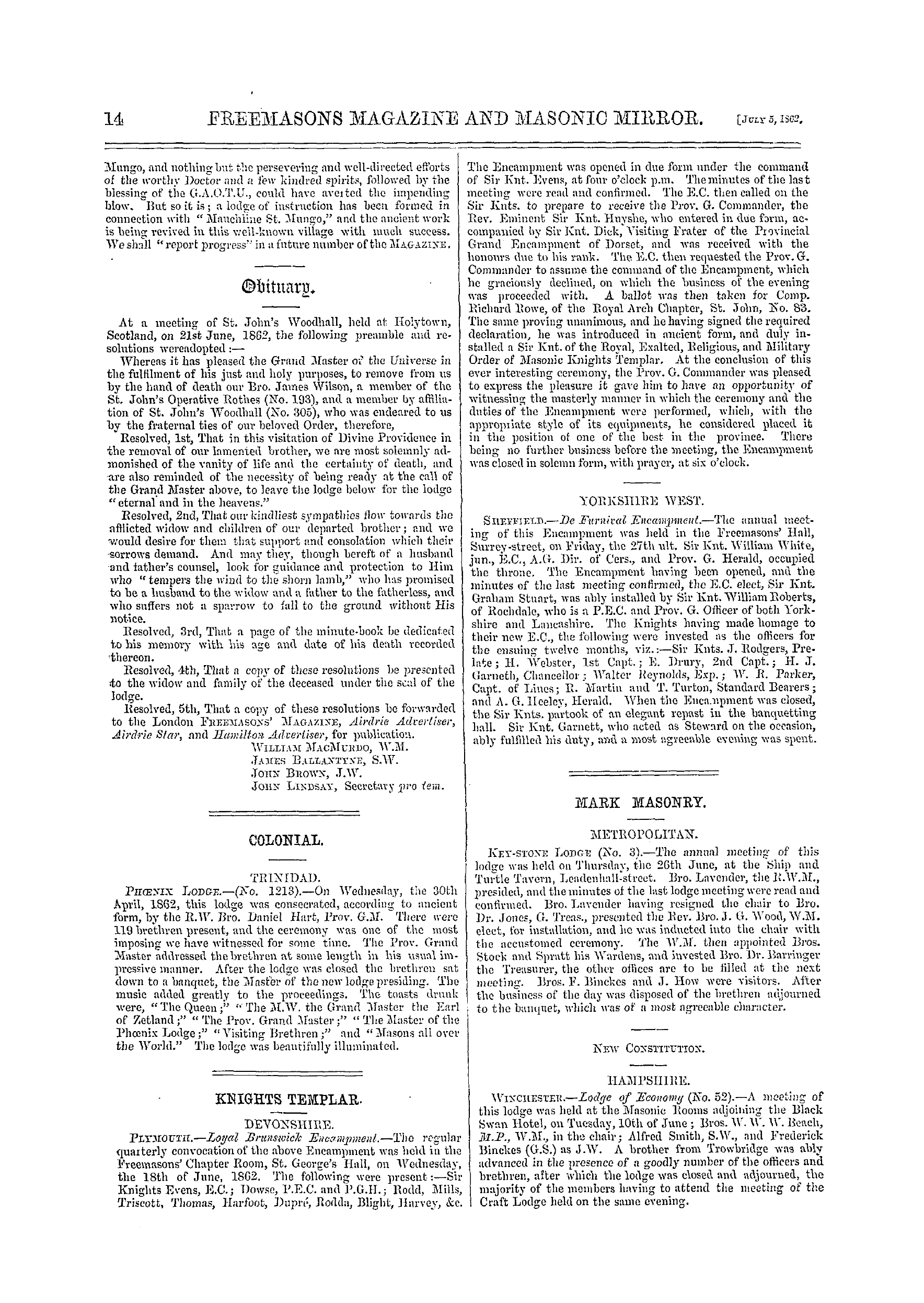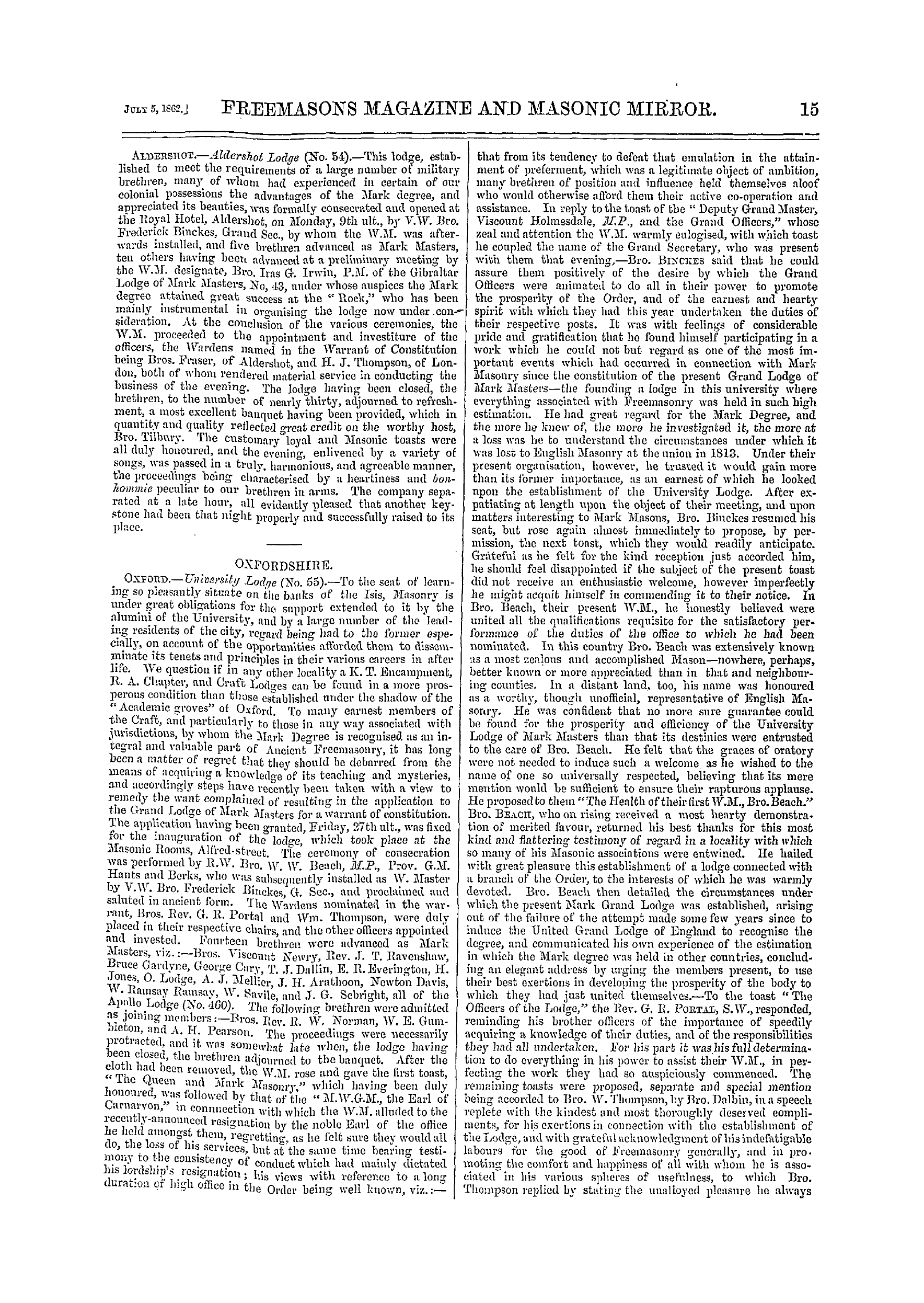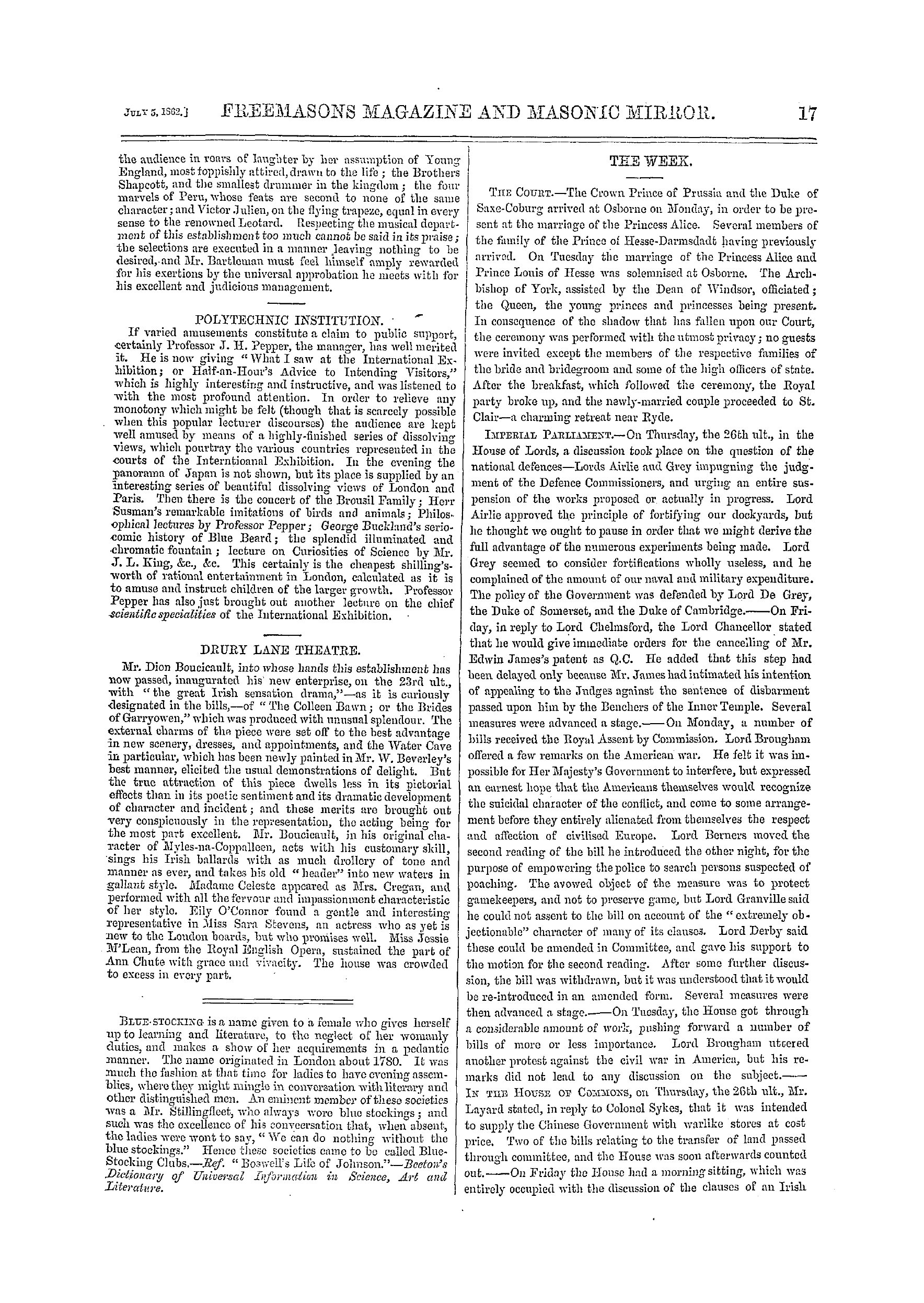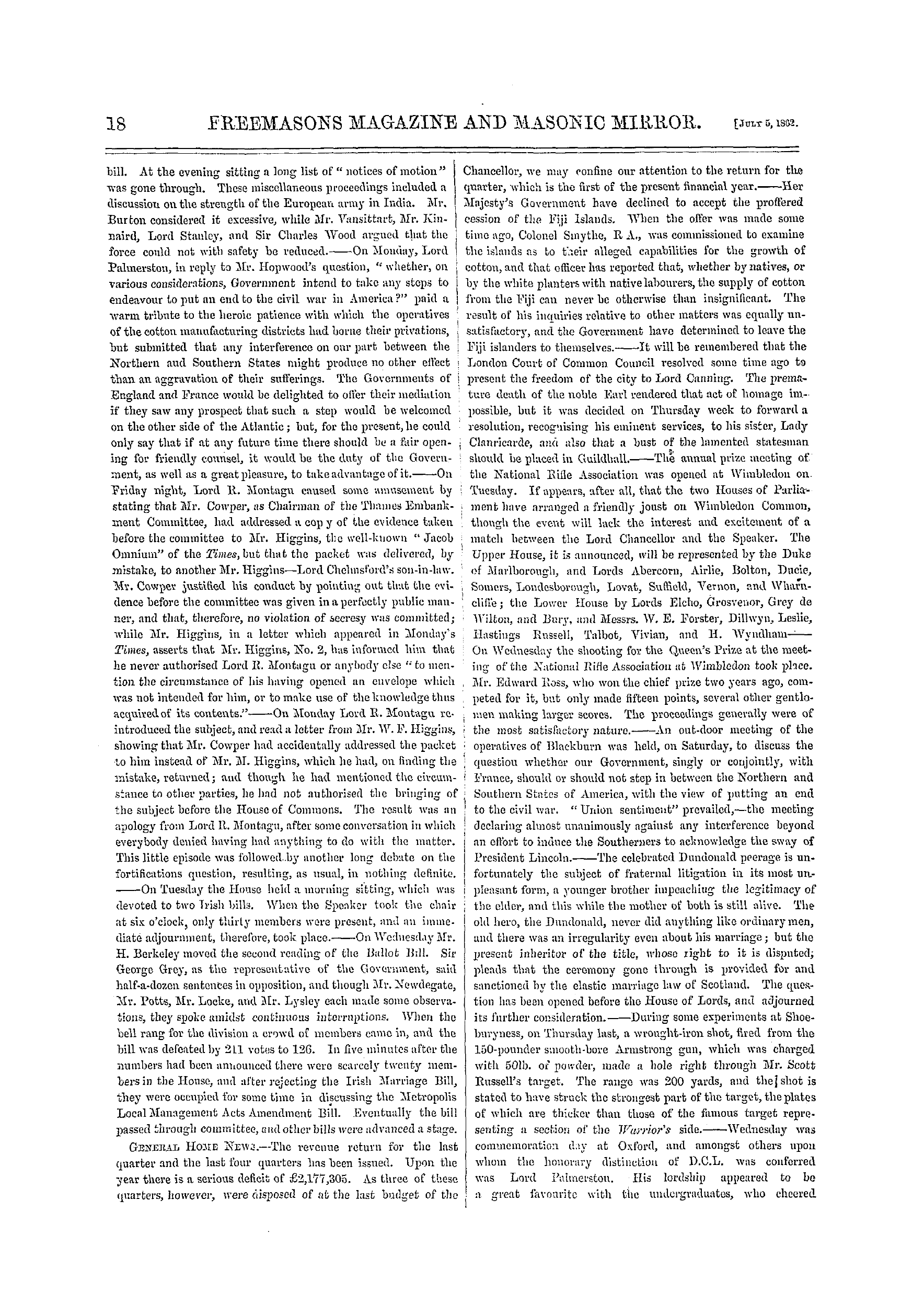-
Articles/Ads
Article ART AND MANUFACTURE. ← Page 2 of 3 Article ART AND MANUFACTURE. Page 2 of 3 →
Note: This text has been automatically extracted via Optical Character Recognition (OCR) software.
Art And Manufacture.
hands , and all ho docs , or can do , is to take a very accurate impress of that pattern in sand , and then to pour molten , metal very steadily into the mould . The pattern that came into his hands is tho circumstance which influences the character of the ornament produced , and so long as he can mould neatly and pour steadily , any number of castings mny be produced , each like the other , and quite independent of the ivorkman ' s possessing or wanting artistic sense and taste .
That the difference bore pointed ont obtains between all articles manufactured in quantities , and all those made singly , ivill probably be admitted without hesitation . We admire the art of the carver , when wo examine a cornice carved in stone or wood -, but AA'hen ive admire an enriched plaster cornice , though we may praise tho workmanship of the plasterer , we admitc the art ofthe original
modeller . The painter gives the impress of art to a picture , of which he with his own hand lays the colours on to the canvas ; but in an engraving AVO owe the beauty and value ofthe ivork , not to the printer who spreads the ink on tho plate and passes ifc through the press , but to the engraA'er , whoso cunning cut into the nlate thoso original lines .
Just as there is higher art in jiainting than in engraving , in sculpture than in plaster casts , in beaten Avork than in metal Avork ; so there alivays will and must be the highest excellence in those productions in which tho same mind Avhich originates guides the hand that executes . Though this bo true , there is an absolute necessity for the adoption of tho princile of manufacture in meeting the
p wants of a populous and civilised country . Hence it cromes to pass , that in executing works even of an ornamental nature , we are are obliged to be content with only seldom employing artistic handiwork , and to resort to rapid methods of manufacture .
This necessity being admitted , it remains that , ivhile wo should jealously guard against tho infringements . Avhich manufacture is likely to make upon the legitimate domains of art , AVO should at the same time exert ourselvcs strenuously to ensure the assistance of the best art available for forming the patterns and originals of all manufactured goods . We have been of late exceedingly
¦ desirous to extend the application of art manufactures , and have succeeded lvonderfully AVCII ; AVO have also done a great deal within tho last few yeai-s to improve the taste ancl skill of the designers of all sorts of ornamental articles and objects . Ifc is , however , to be feared that we are by no means equally on our guard against the danger ol alloiving manufacture to usurp the place of handicraft
, in oven the highest departments of art ; and it is principally with a desire to draw attention to this danger that the subject is now considered . The ordinary architecture of tho day ( and architecture is generally the truest exponent of tho state of popular taste ) is one admitting of as lvcarisomo a repetition of the time alter time which
same pattern , as any can occur in the manufacture of Avail-papers , or table-cloths , nor is the state of Paris in this respect much bettor than that of English cities . In short , a l-ast majority of our buildings may bo compared to tho Latin and Greek verse produced by the hundred lines afc public schools , constructed npon a definite form , supplied ivith metaphors , similes ,
and epithet . ? , from a supply carefully classified , and alphabetically arranged in the "Gradus ad Parnussmn . " _ The A'cry fact that symmetrical repetition of equal and similar features , is one of the main sources of effect in all tho classical styles , and that the classical styles or corruptions of them have been , since the Reformation , the onlones generallpopular in this countryhas
iny y , duced a strong inclination to promote the endless repetition of those small details where carving or other handiwork might have been happily introduced , to stamp an individual character upon a whole building or portion of a building ; and it is indeed fortunate that the Gothic revival has at last come , and drawn attention to the value
Art And Manufacture.
of the opposite principle , that of endless variety and individual character , both in features and in buildings . While good Gothic work will alii-ays command and require the labours of original artistic Avorkmen , in many branches , we cannot but sec that the manufacturer has been called innot onlto aid the architect by tho
-, y pro duction of simple , and necessarily manufactured articles , such as tiles , ivindow quarries , or crestings , but even to supplant the art-workman in portions of the building , wliich can id alford to lose the characteristic touch which the individual Avorkman alone can give .
There is nothing so truly living and artistic about a building , as the carving on its nooks and corners , its angles , pinnacles , and bosses ; yet we have carving-works , where the work is performed wholesale hy machinery , and if ive do not also carve stone by a similar process , it arises more from the intractability of the material than from au indisposition to subject ifc to the steam-engine and the
drill . But metal work illustrates , far more than any other work , the danger of allowing the wholesale manufacturer to invade the domains of the artist . Nothing affords finer scope for tho display of original design , and of good artistic feeling in the workman , than the ornamental hinge fronts on tho face of a Gothic door , and the beaten finials ivhieh mark the hihest points of the roofs
g , or crown the summits of spirelets , dormers , or other small features ; yet how seldom is the hand of an artist —an original worker—discernible in these features , particularly in the hinges ! We get the pattern-book of ono of the manufacturers of such articles , and having satisfied ourselves about tho price , the discount , the extra charge for carriage and packing casesand the
, length of credit given , we order a pair of hinges , No . 25 , or No . 50 ; and a ring , No . 12 , and latch No . 2 , just as if an ornamental feature on the level of the eye , and exhibited with every advantage of contrast , of colour , as well as proximity , ivere not as worthy of the best design and original handiwork as the bosses that stop the label which shelters the doorway , or
the tender garland of spring fioivers Avhich tivines and curls in the deep hollow running round it not tivelve inches away ! It is of course true that , but for the artistic and
inexpensive Avay in Avhich such articles are noiv manufactured , they ivould be omitted altogether from A ei-y many economical buildings to Avhich they form an agreeable ornament , at an almost nominal expense ; but this is no excuse for adopting cast hinges and cast-iron finials in places Ai-here the funds exist for original work . Where the character of the Avork rises to that of pure art , the
importance of avoiding manufactured ornaments , and replacing them ivith Avrought ones , is very great . Such a ivork as the Hereford screen afc the International Exhibition , purely ornamental in intention , rich in design , laA'ish in decoration , and especially beautiful from the variety of its colouring , presents , in its smallest partsan amount of repetition ivhieh Avould not have
, occurred in a media , val ivork of the same value . True , the middle age workmen Avould havo wrought upon it for more years than the " Skidmoro Art Manufactures Company " have done months -, but it is thus only that a great piece of purely ornamental ivork ought to bo produced , and thus alone that ifc can be rendered instinct ivith life and beauty , to the tip of every tendril and tho heart of
every feature ancl leaf , and thus alone that it can thoroughly merit the place of a work of the highest art . AVe have chosen this illustration , because this repetition of minor features in a work of confessedly A-ery high merit , coupled Avith the ominous title assumed by tho well-known makers ofthe screen , and ivith the still more ominous praise showered upon thoso makers for the
speed Avith which the work Avas done , argues unlavourably for the courso in w-hich AVC aro going ; and will even compare unfavourably with the best examples of renaissance work , where the temptation to abandon all attempts afc
Note: This text has been automatically extracted via Optical Character Recognition (OCR) software.
Art And Manufacture.
hands , and all ho docs , or can do , is to take a very accurate impress of that pattern in sand , and then to pour molten , metal very steadily into the mould . The pattern that came into his hands is tho circumstance which influences the character of the ornament produced , and so long as he can mould neatly and pour steadily , any number of castings mny be produced , each like the other , and quite independent of the ivorkman ' s possessing or wanting artistic sense and taste .
That the difference bore pointed ont obtains between all articles manufactured in quantities , and all those made singly , ivill probably be admitted without hesitation . We admire the art of the carver , when wo examine a cornice carved in stone or wood -, but AA'hen ive admire an enriched plaster cornice , though we may praise tho workmanship of the plasterer , we admitc the art ofthe original
modeller . The painter gives the impress of art to a picture , of which he with his own hand lays the colours on to the canvas ; but in an engraving AVO owe the beauty and value ofthe ivork , not to the printer who spreads the ink on tho plate and passes ifc through the press , but to the engraA'er , whoso cunning cut into the nlate thoso original lines .
Just as there is higher art in jiainting than in engraving , in sculpture than in plaster casts , in beaten Avork than in metal Avork ; so there alivays will and must be the highest excellence in those productions in which tho same mind Avhich originates guides the hand that executes . Though this bo true , there is an absolute necessity for the adoption of tho princile of manufacture in meeting the
p wants of a populous and civilised country . Hence it cromes to pass , that in executing works even of an ornamental nature , we are are obliged to be content with only seldom employing artistic handiwork , and to resort to rapid methods of manufacture .
This necessity being admitted , it remains that , ivhile wo should jealously guard against tho infringements . Avhich manufacture is likely to make upon the legitimate domains of art , AVO should at the same time exert ourselvcs strenuously to ensure the assistance of the best art available for forming the patterns and originals of all manufactured goods . We have been of late exceedingly
¦ desirous to extend the application of art manufactures , and have succeeded lvonderfully AVCII ; AVO have also done a great deal within tho last few yeai-s to improve the taste ancl skill of the designers of all sorts of ornamental articles and objects . Ifc is , however , to be feared that we are by no means equally on our guard against the danger ol alloiving manufacture to usurp the place of handicraft
, in oven the highest departments of art ; and it is principally with a desire to draw attention to this danger that the subject is now considered . The ordinary architecture of tho day ( and architecture is generally the truest exponent of tho state of popular taste ) is one admitting of as lvcarisomo a repetition of the time alter time which
same pattern , as any can occur in the manufacture of Avail-papers , or table-cloths , nor is the state of Paris in this respect much bettor than that of English cities . In short , a l-ast majority of our buildings may bo compared to tho Latin and Greek verse produced by the hundred lines afc public schools , constructed npon a definite form , supplied ivith metaphors , similes ,
and epithet . ? , from a supply carefully classified , and alphabetically arranged in the "Gradus ad Parnussmn . " _ The A'cry fact that symmetrical repetition of equal and similar features , is one of the main sources of effect in all tho classical styles , and that the classical styles or corruptions of them have been , since the Reformation , the onlones generallpopular in this countryhas
iny y , duced a strong inclination to promote the endless repetition of those small details where carving or other handiwork might have been happily introduced , to stamp an individual character upon a whole building or portion of a building ; and it is indeed fortunate that the Gothic revival has at last come , and drawn attention to the value
Art And Manufacture.
of the opposite principle , that of endless variety and individual character , both in features and in buildings . While good Gothic work will alii-ays command and require the labours of original artistic Avorkmen , in many branches , we cannot but sec that the manufacturer has been called innot onlto aid the architect by tho
-, y pro duction of simple , and necessarily manufactured articles , such as tiles , ivindow quarries , or crestings , but even to supplant the art-workman in portions of the building , wliich can id alford to lose the characteristic touch which the individual Avorkman alone can give .
There is nothing so truly living and artistic about a building , as the carving on its nooks and corners , its angles , pinnacles , and bosses ; yet we have carving-works , where the work is performed wholesale hy machinery , and if ive do not also carve stone by a similar process , it arises more from the intractability of the material than from au indisposition to subject ifc to the steam-engine and the
drill . But metal work illustrates , far more than any other work , the danger of allowing the wholesale manufacturer to invade the domains of the artist . Nothing affords finer scope for tho display of original design , and of good artistic feeling in the workman , than the ornamental hinge fronts on tho face of a Gothic door , and the beaten finials ivhieh mark the hihest points of the roofs
g , or crown the summits of spirelets , dormers , or other small features ; yet how seldom is the hand of an artist —an original worker—discernible in these features , particularly in the hinges ! We get the pattern-book of ono of the manufacturers of such articles , and having satisfied ourselves about tho price , the discount , the extra charge for carriage and packing casesand the
, length of credit given , we order a pair of hinges , No . 25 , or No . 50 ; and a ring , No . 12 , and latch No . 2 , just as if an ornamental feature on the level of the eye , and exhibited with every advantage of contrast , of colour , as well as proximity , ivere not as worthy of the best design and original handiwork as the bosses that stop the label which shelters the doorway , or
the tender garland of spring fioivers Avhich tivines and curls in the deep hollow running round it not tivelve inches away ! It is of course true that , but for the artistic and
inexpensive Avay in Avhich such articles are noiv manufactured , they ivould be omitted altogether from A ei-y many economical buildings to Avhich they form an agreeable ornament , at an almost nominal expense ; but this is no excuse for adopting cast hinges and cast-iron finials in places Ai-here the funds exist for original work . Where the character of the Avork rises to that of pure art , the
importance of avoiding manufactured ornaments , and replacing them ivith Avrought ones , is very great . Such a ivork as the Hereford screen afc the International Exhibition , purely ornamental in intention , rich in design , laA'ish in decoration , and especially beautiful from the variety of its colouring , presents , in its smallest partsan amount of repetition ivhieh Avould not have
, occurred in a media , val ivork of the same value . True , the middle age workmen Avould havo wrought upon it for more years than the " Skidmoro Art Manufactures Company " have done months -, but it is thus only that a great piece of purely ornamental ivork ought to bo produced , and thus alone that ifc can be rendered instinct ivith life and beauty , to the tip of every tendril and tho heart of
every feature ancl leaf , and thus alone that it can thoroughly merit the place of a work of the highest art . AVe have chosen this illustration , because this repetition of minor features in a work of confessedly A-ery high merit , coupled Avith the ominous title assumed by tho well-known makers ofthe screen , and ivith the still more ominous praise showered upon thoso makers for the
speed Avith which the work Avas done , argues unlavourably for the courso in w-hich AVC aro going ; and will even compare unfavourably with the best examples of renaissance work , where the temptation to abandon all attempts afc


























